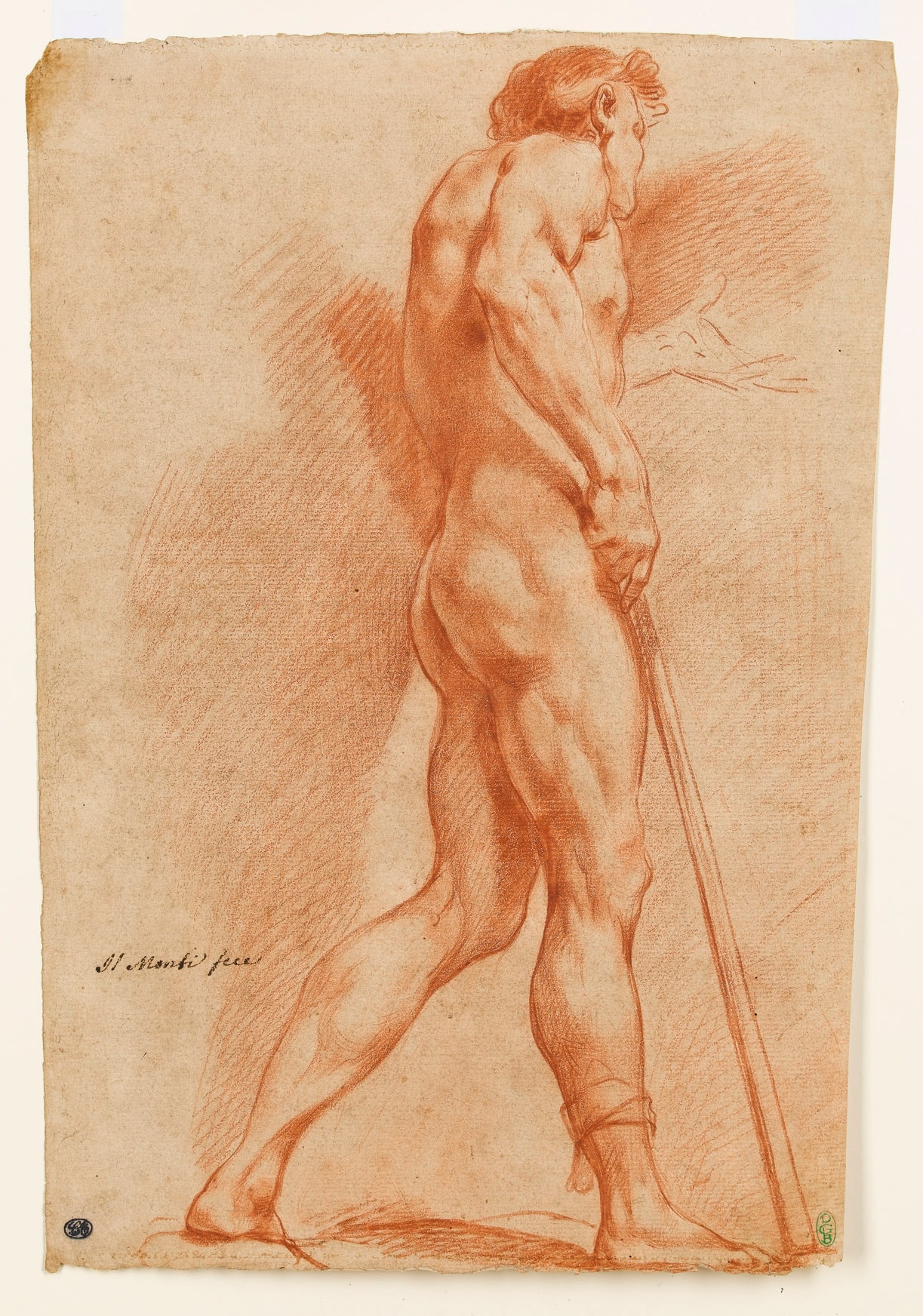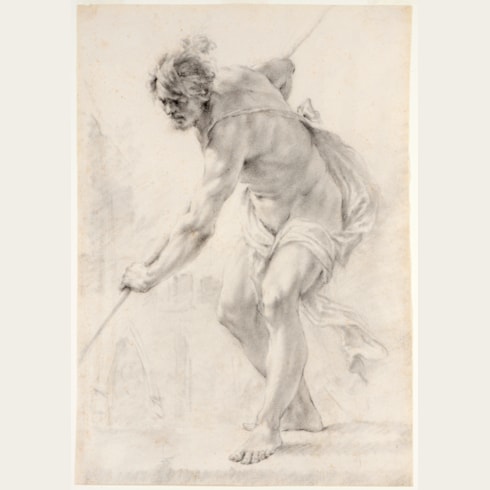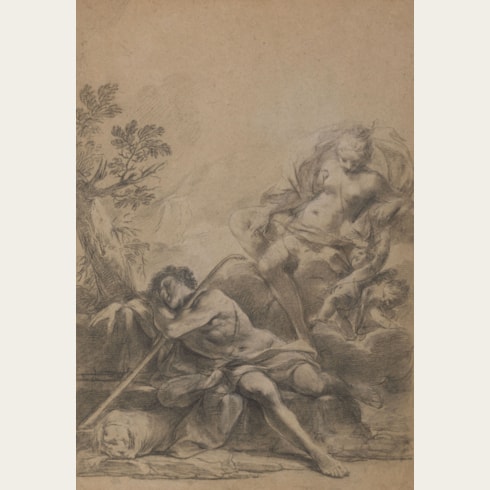Francesco MONTI
(Bologna 1685 - Brescia 1768)
Study of a Standing Male Nude
Sold
Red chalk on buff paper.
An outline sketch of a group of figures (for an Adoration?) in red chalk on the verso.
Inscribed (by Maggiori) Il Monti fece at the lower left centre.
Further inscribed Io / Aless. Maggiori / comprai in / Bologna / il / giorno 7 di luglio / del / 1791. on the verso.
457 x 287 mm. (18 x 11 1/4 in.)
An outline sketch of a group of figures (for an Adoration?) in red chalk on the verso.
Inscribed (by Maggiori) Il Monti fece at the lower left centre.
Further inscribed Io / Aless. Maggiori / comprai in / Bologna / il / giorno 7 di luglio / del / 1791. on the verso.
457 x 287 mm. (18 x 11 1/4 in.)
A stylistically related red chalk drawing of a male nude academy, also from the collection of Alessandro Maggiori and similarly attributed by him to Francesco Monti, was on the art market in 1997 and 1998.
The collector Count Alessandro Maggiori (1764-1834) assembled a large and varied collection of Italian drawings, which are invariably annotated by him with the place and year of their purchase. From these inscriptions it appears that Maggiori was mainly active between 1785 and 1829, acquiring drawings in Bologna, Faenza, Rome and Naples. Numerous drawings from Maggiori’s collection were later acquired by Pier Giulio Breschi, whose collection was in turn acquired en bloc by the publisher Claudio Argentieri; as a result the collector’s marks of the latter two are almost always seen together on a drawing. The Breschi-Argentieri drawings seem to have been dispersed in the 1950’s.
The collector Count Alessandro Maggiori (1764-1834) assembled a large and varied collection of Italian drawings, which are invariably annotated by him with the place and year of their purchase. From these inscriptions it appears that Maggiori was mainly active between 1785 and 1829, acquiring drawings in Bologna, Faenza, Rome and Naples. Numerous drawings from Maggiori’s collection were later acquired by Pier Giulio Breschi, whose collection was in turn acquired en bloc by the publisher Claudio Argentieri; as a result the collector’s marks of the latter two are almost always seen together on a drawing. The Breschi-Argentieri drawings seem to have been dispersed in the 1950’s.
Following a period of study in Modena with Sigismondo Caula, Francesco Monti returned in 1693 to his native Bologna, where he completed his training in the studio of Giovan Gioseffo Dal Sole. The Venetian qualities inherited from Caula remained evident in his work throughout his long and successful career. Among his important early works is the large Pentecost for the church of San Prospero in Reggio Emilia, dated 1713. His career flourished in the 1720’s, when he received a number of significant commissions for history paintings and was elected to a term as principe of the Accademia Clementina.
Together with such artists as Donato Creti, Sebastiano and Marco Ricci, Giambattista Pittoni, Canaletto, Giovanni Battista Piazzetta and others, Monti contributed to a series of large allegorical paintings of imaginary tombs commemorating prominent British noblemen, commissioned by the Irish entrepeneur Owen McSwiny in the late 1720’s and 1730’s from teams of the foremost Venetian and Bolognese painters of the day. Monti also executed several paintings for churches in Bologna and the surrounding region, among them a Death of Saint Peter Martyr for San Domenico in Modena, completed in 1732. Four years later he moved to Brescia to work on the decorations, now lost, of the Palazzo Martinengo. The success of this project led to further commissions, and Monti eventually established a flourishing practice in Brescia. The later years of his career were spent working mainly in Lombardy – mainly in Brescia, Cremona and Bergamo – on a number of large-scale fresco commissions. Among his most significant late works is the extensive decoration of the church of Santa Maria della Pace in Brescia.
Monti is perhaps better known today as a draughtsman than as a painter. As has been noted of the artist, ‘Monti’s drawing style is highly individualistic: it is based on the firm Bolognese academic tradition, but the treatment of the chalk medium, which he preferred, is handled with a particular deftness...His lightness of touch, combined with the “Neo-Mannerist” predilection for attenuated figures, produce a combination of elegance and spontaneity rare in the Bolognese tradition.’ Monti was a prolific and gifted draughtsman, producing both figure studies in black chalk and compositional drawings in red chalk.
Provenance
Alessandro Maggiori, Fermo (Lugt 3005b), purchased in Bologna in July 1791, according to his inscription on the verso
Pier Giulio Breschi, Rome (Lugt 2079b)
Claudio Argentieri, Spoleto and Rome (Lugt 486b)
Anonymous sale, London, Christie’s, 2 July 1985, lot 17
Frederick Cummings, New York
W. M. Brady & Co., New York.






